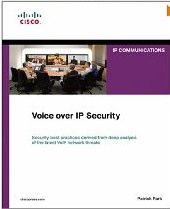Of course you can’t stop criminals from stealing mobile phones; they’re small, they’re expensive and there are many channels (online and offline) for selling the handsets on. However, it should be possible to make the things useless once stolen, to make resale difficult or impossible, ultimately reducing the demand for theft.
The Design Council in the UK are currently running a competition to generate ideas to make mobile phones safer, with the best idea receiving support to the tune of £100,000 to develop the idea further. This seems to me a whole lot better way to raise money than appearing on Dragons Den for a ritual butt-kicking and dilution of your share capital.
As I discovered to my cost at the recent Mobile World Congress in Barcelona, mobile phone crime is rife, and a barbarian horde of dark ages proportions is seemingly there working the city for February. I heard tales of muggings, crews targetting group dinners in restaurants, and of course pickpockets. One friend of mine had an experience in the Metro with one guy blocking his way, while another tried to slip a hand into his pocket from the other side. My friend is over 2m tall, and looks more like an international rugby player than a telco geek, and probably could have wiped the floor with both of them at the same time. Some of these teams have no fear.
In my case, my Nokia smartphone disappeared never to return. They got no satisfaction from the SIM card (which was PIN-locked), but sadly I had disabled coded locking on the handset itself, making it a useful asset, possibly worth £70 on Ebay. Just look for smartphones with no cables, no charger, no manual; guess where they came from?
Incidentally, my phone was marked with a label from yougetitback.com, a worthwhile property registration and return service. Sadly in this case, the phone didn’t fall into the hands of “friendlies”, but rather those of WeHaveNickedYourPhone.com.
Of course with smartphones the problems don’t stop with your cellco contract being exposed to call fraud, or the sale of the handset itself. The phone also contains signup information in applications, and the data itself. In my case, several applications were installed including Skype, Truphone and Gizmo. A lot of VoIP apps have the capability to connect out to the PSTN using some kind of pre-pay balance, which of course could also be at the mercy of a crim once he gets his hands on your smartphone.
With the proliferation of app-stores, many handsets may also be ready to provide “free” downloads to the enterprising criminal. In general, there is a lot of industry work going into making mobile phones into “wallets” that can be used for a whole variety of micro-payments, for example car parking fees. In addition there maybe DRM-locked content that is in the handset when stolen; it has a monetary value, and yet is difficult claim on insurance.
Smartphones can potentially have a lot of different apps loaded, and if we are lazy we mght have them setup (for our own convenience) to logon automatically to countless online systems. The risk is not only financial, but also opening you to impersonation and data theft, via a variety of online services that you access from your phone.
We certainly need to think hard about the way we use services and the way we buy using our mobile handsets. PIN-codes, passwords, time-locks and encryption are tools that we should have enabled, even though it means more inconvenience for us to make calls, lookup our location and so on. I hope the £100K Design Council bursary generates some good ideas, and for my barbarian friends that visit Barcelona each February, let me wish you failure and humiliation in your every venture.
Amusingly, at the time my phone was stolen, I was running a number of location applications including Palringo, Buddycloud and I think also Google Latitude (and yes, it does run hot with all the apps running!). A friend suggested that we go and look-up where the handset travelled to, and then put the Police on to them! Sadly, in this case the crim was not so dumb, and had already powered-off the phone. That would have been sweet revenge indeed.


 It appears that there is a new book out on VoIP security named, rather simply, “
It appears that there is a new book out on VoIP security named, rather simply, “
 If you are an Asterisk user, you should be aware that Digium has released
If you are an Asterisk user, you should be aware that Digium has released